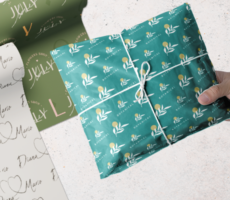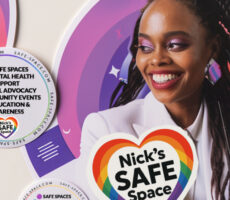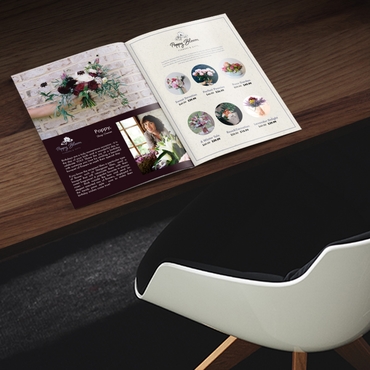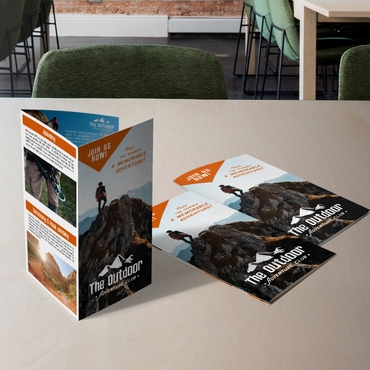For this year’s Nightclub Bar & Expo Convention here in sunny Las Vegas we thought we take a look at some of the music genres that defined generations of club goers. The history the nightclub in America is rich with tradition and uniqueness; with each generation having its own unique style, ambience and signature music. Let’s explore the music and clubs of the past up to today.
1880’s – 1910’s (Dance Hall, Honky-Tonk and Ragtime)
1886 is where we make our first stop, just outside of Astor Place in the East Village of Manhattan. Webster Hall, touted as THE original nightclub and concert venue, first opened by Charles Goldstein, who lived and ran the club until his death. Dance hall music was big, with popular hits from such famous writers as George J. Gaskin and Dan Quinn.
By the beginning of the 1900’s modern ballroom dance and honky-tonk had become the popular styles to dance to in America. The precursor for modern Country music, honky-tonks were popular in Southern cities among working-class and had a slightly up-tempo speed versus other popular genres of the time, like dance hall.
With origins firmly rooted in African-American communities, ragtime enjoyed immense popularity during the late 1890’s through the 1910’s. It’s “ragged” rhythm refers to is syncopated rhythmic style and the name “ragtime” is generally credited to Ernest Hogan, a pioneer of ragtime and the first ragtime artist to have his works published as sheet music. Ragtime is said to have originated in St. Louis, and at its peak of popularity could be found in clubs as far as the west coast and New York City.
1920’s – 1930’s (Jazz Age)
As popular as music might have been in clubs in the 1890’s through the 1910’s, nightclubs didn’t truly take off in popularity until the 1920’s and the advent of Jazz. A number of big, prominent clubs sprung up in the 1920’s with dance music characterized by large, ornate orchestras with string instruments and complex arrangements. Dances like the fox-trot exploded in popularity.
A native to New Orleans, Jazz is a fusion of African and European music with an influence in pop culture which continued long after it eventually fell out of style. Jazz was synonymous with the Roaring Twenties, a term coined by author F. Scott. Fitzgerald, an enthusiastic admirer of Jazz and “flappers” an, at the time, bold fashion statement typically worn by young women. The Charleston dance is typically associated with the popularity of this age, being made iconic by Josephine Baker, a popular dancer of the era.
Speakeasies became widely synonymous with Jazz as many popular venues hosting jazz music were in essence fronts for the sale and distribution of beer and alcoholic drinks, banned at the time in the United States. Jazz also had an influence on teenagers and young adults who saw Jazz as a personal style of music and a way to rebel against traditional culture of previous generations.
After the repeal of Prohibition in 1933, nightclubs came out of the underground speakeasies, illegal bars and halls. Clubs such as the 21 Club in New York, Copacabana, el Morocco and the Stork Club all became hugely popular, featuring large, orchestric big bands.
1930’s – 1940’s (Swing Music)
Dominating the music and dance hall/club scene from the late 1930’s through the 1940’s was swing music, often referred to just as ‘Swing’. Somewhat of a departure from Jazz, Swing bands featured solo musicians who would improvise on melodies. Bandleaders of the era such as Benny Goodman ruled the airwaves with artists like Louis Armstrong, Duke Eillington and Cab Calloway writing popular arrangements Americans were dancing to in clubs.
Dances like the Jitterbug, which originated in the 1930’s became popular in mid-1940’s. In 1944 The United States levied a 30% federal excise tax against dance clubs. Signs exclaiming “No Dancing Allowed” sprung up across the nation. Although many dance clubs shuttered their doors during this time Americans and troops abroad didn’t stop dancing, bringing the Jitterbug and other dances to European shores where American music would spread and became immensely popular.
1950’s (Dixieland and Rock N Roll)
Dance music continued on with its popularity into post-war 1950’s in the form of Dixieland, a revival of the earlier Jazz Age. A reference to the “Old South”, Dixieland includes many of the same instruments found in a traditional Jazz ensemble with a definitive sound that was created, typically using a trumpet, playing a melody and instruments of the front line improvising around the melody.
The earliest foundations for what would end up being the modern nightclub or discothèque originated in the early 1950’s with the opening of the Parisian nightclub Whisky à Gogo. Whisky à Gogo featured a dance-floor with suspended colored lights overhead and the jukebox was replaced with two turntables to eliminate any breaks between songs.
Although the Jazzesque Dixieland was the top at dance halls and clubs in the 50’s another genre of music was quickly gaining popularity and would pave the way for redefining dance music for a generation. That genre, Rock N Roll, would find its roots in the late 40’s and 50’s and would feature piano or saxophone as lead instrument with a rhythm and blues beat, snare drum and included lyrics and singing typically found in gospel, blues, jazz and even country music. By the mid-50’s the guitar would replace the piano or saxophone in many of the most popular tunes.
Rock and Roll was primarily made possible because of technological advances of the time. Amplifiers, microphones and the 45 rpm record meant that smaller bands could carry large sounds, making Rock and Roll perfect for the radio and dance club alike. Hit songs like Rock Around the Clock, Maybellene, The Twist, The Mashed Potato, The Watusi and The Shake would become popular dance crazes in clubs in the 50’s, as Rock and Roll continued its roll over previous genres of dance music.
Around this time American’s were tuning in to shows like American Bandstand on their televisions where host Dick Clark would play hot Rock N Roll tracks and ask audience members for their reactions. TV shows like American Bandstand were influential for bringing awareness of the new genre of music to the American populous and was responsible for introducing such artists as Chuck Barry, Frankie Avalon, Bobby Rydell and Fabian to the American public.
1960’s (Go-Go and Folk Music)
In the 60’s clubs like Brave New World, The Ash Grove Folk Music Club and Cinnamon Cinder were venues artists like Frank Zappa, Sonny & Cher and The Rolling Stones would enthrall throngs of visitors with their hit music. In many clubs across the country during the 60’s you might see scantily clad young women in bird-like cages, dancing to the top dance tracks of the day. By the 60’s the big and small bands disappeared from a lot of dance clubs, replaced with record players and vinyl disks.
When discussing the night club scene of the 60’s some say it all started in New York City where early discotheques reigned supreme. Clubs like Le Club, Cheetah, Ondine and Arthur drew celebrities, the upper and working class alike. Here patrons could partake of drugs, fancy libations and nonstop dancing to the top hits of the time from artists such as Donna Summer, The Beatles, Stevie Wonder, Kool & the Gang, James Brown, The Supremes and Sly & The Family Stone.
Go Go music, taken from the French “a gogo” which could be translated as “galore” or “joy” also ruled in the 1960’s. Hits like The Twist, These Boots Are Made for Walkin’, the Stomp and the Swim were common fare in clubs. Go Go music and dancing also overflowed during the 60’s to movies, television, shows, carnivals and bands. Go Go dancing also created stars like Goldie Hawn, whose Go Go dancing was routinely included on the hit 60’s show Rowan & Martin’s Laugh-In.
1970’s (DISCO)
There’s little question disco reigned supreme in the 70’s. Originating in the early 70’s disco encompassed music with a definitive style, including several distinct components: a “four-on-the-floor” beat, an eighth or sixteenth note, hi-hat pattern and a prominent, syncopated electric bass line. Many songs included strings, piano, guitars, a flute and electronic synthesizers. Some feel disco got its start with Rock the Boat from Hues Corporation. Once disco got its foothold in dance clubs around the nation it ruled for much of the decade.
Many disco hits included elements of music styles such as Funk, Psychedelic, Soul and Pop. Disco paved the path for future genres of dance club music such as New Wave, Synth-Pop, hip hop and house music. Donna Summer’s, I Feel Love (from 1974) is considered by many to be the first House or Techno song and was prominently played in discos. Disco could be found in just about every city in both large and small clubs and its popularity stretched to many other countries around the world, making disco a truly international music movement.
Hugely popular clubs like Studio 54, the roller disco Empire, Le Clique, Mudd Club and Starship Discovery were considered the quintessential disco clubs of the era and started as clubs where marginalized people could go during the night to congregate, dance and generally feel safe from oppression. During this era the use of DJs really took off and in virtually every club you could find one playing hit after hit of the time.
Like Go Go, disco also transitioned into virtually every other medium, with movies such as Saturady Night Fever, Disco Fever, Roller Boogie, The Rocky Horror Picture Show and ABBA: The Movie being immensely popular. Soul Train, created and hosted by Don Cornelius, could be watched weekly where couples and individuals disco danced their way between two lines of other disco dancing guests. Big disco hits of the era included Stayin’ Alive, Le Freak, Night Fever, Funkytown, Dancing Queen, You Make Me Feel, The Hustle, Y.M.C.A and Ring My Bell, among others.
1980’s (Rock, Hip Hop & New Wave)
As disco music quickly and loudly died in popularity at the beginning of the 80’s many clubs moved to a new genre of music, typically labeled plainly as New Wave. New Wave music, a sub-genre of rock music, encompassed genres like pop, synth-pop, post-punk and electronic music. New Wave was largely made popular with the birth of MTV in 1981. There early videos featuring New Wave songs like the Buggles’ “Video Killed the Radio Star”, Duran Duran, Cyndi Lauper and Devo helped increase New Wave’s exposure and firmly planted the style into 80’s culture and style.
Clubs like CGBG in New York was a mainstay of the 80’s; hosting bands like Blondie, The Ramones and the Talking Heads. Other clubs in the US like Area, Danceteria and The Limelight headlined popular New Wave artists of the era. In London, the 80’s saw the rise of the New Romantic movement where such clubs as Billy’s and The Blitz played music from groups like the Culture Club, A Flock of Seagulls, Duran Duran, Spandau Ballet and Adam and the Ants. The movement was characterized by eccentric men and women’s fashion and continued on the fashion themes of the glam rock artists like David Bowie and Marc Bolan of the 70’s.
Around 1983 hard rock and glam metal started to become extremely popular for the air waves, music videos on MTV and night clubs. Bands like Def Leppard, Poison, Bon Jovi, Mötley Crüe and Twisted Sister were hard rock acts that became extremely popular during the 80’s; ruling virtually all aspects of entertainment from the mid-80’s to the end of the decade. Clubs where hard and glam rock ruled during this time included Das Club and DV8 in San Francisco, Fender’s Ballroom, Old World, Scream in LA, The Thirsty Whale, Victor Hugo’s, Button’s South, The Cathouse in Hollywood, Xenon West and Cathouse in NY.
Also growing in popularity around this time, although nowhere near as popular as hard or glam rock, was Alternative Rock. Originating from the independent music underground scene, Alternative Rock was classified as any music consisting of music that sounded significantly different than most of the rock music that was largely popular. Groups like R.E.M., The Cure, The Smiths, Jane’s Addiction, Nine Inch Nails, and Henry Rollins became popular in both clubs and in videos on MTV and VH1. Clubs like #’s, 668, After the Gold Rush, The Bayou in Baton Rouge, Danseparc, Metron, The Palace in Hollywood and Studio 9 were havens for alternative rock fans during the 80’s.
Rounding out our list of influential music genres of the 80’s is hip hop. Originating from the Bronx, NY hip hop consists of four main elements, including rapping, a rhythmic rhyming style, a DJ typically on a turn table and ‘mixers’ consisting of aural notes and sampling from other musical works. Influences of hip hop include rag-time, funk, jazz and the blues. Early artists like Afrika Bambaataa, Grandmaster Flash and Whodini paved the way for a growing number of hip hop artists in the 80’s.
Hip hop grew to a cultural movement with many artists including socially conscious lyrics. As hip hop artists’ songs were more frequently played on “Hits” stations and MTV, its influence grew and soon more and more clubs would begin to play hip hop music. Clubs like Electric Avenue in Orlando, Graffittis Danceteria, Jeremiahs and The Sound Factory in New York were common attractions in the mid to late 80’s for those looking to dance. Other influential hip hop artists of the 80’s include Biz Markie, LL Cool J, Public Enemy, Doug E. Fresh and Salt N’ Pepa.
1990’s (House, Hip Hop & Grunge)
The majority of the 1990’s saw techno, trance and hip hop take center stage in clubs. During the decade a new type of club grew to incredible popularity where party goers could go to dance and take illicit drugs. The club type was called ‘raves’. Originally started in the 50’s and 60’s, raves grew to increasing popularity and awareness by the mid 1990’s. Raves were most often undisclosed, unadvertised and secretive locations where groups of young adults would go to dance to house music. Notable rave venues of the day includes Aahz, Tunnel, Club Space and Masterdome.
A blend of hip hop and pop music with tones of house ruled the airwaves and the club scene during the early 90’s with pop and hip hop hits like All Around the World by Lisa Stansfield, Vogue by Madonna, Grove is In the Heart by Deee-List, What is love by Haddaway, Gonna Make You Sweat by C+C Music Factory, Sadness Part 1 by Enigma, Let the Beat Hit ‘Em by Lisa Lisa and Cult Jam, Jump by Kris Kross, Tootsee Roll by 69 Boyz, Mr. Vain by the Culture Beat, Rhythm is a Dancer by SNAP!, I’m too Sexy by Right Said Fred, Unbelievable by EMF, U Can’t Touch This by MC Hammer, Whoom! There it is by Tag Team, Bye Bye Bye By Nsync, Baby One More Time by Britney Spears and Be My Lover by La Bouche ruling the dance clubs in the early to mid-nineties.
While most of the main stream markets and popular nightclubs played hip hop and pop hits during the 90’s, smaller venues and “dungeons” (smaller rooms in larger nightclubs) played techno and house music hits for adolescents and young adults who enjoyed and danced to such hits like Spice from E.O.N., Touch Me by DJ Rui Da Silva, James Brown is Dead by L.A. Style, Everybody in the Place by The prodigy, Go by Moby, Busy Child by The Crystal Method, Future Sound of London by Papua New Guinea, LFO by LFO and Demonik by Labyrinthe.
During the 90’s a brand new genre began to gain exposure both in clubs and on TV and airwaves. Labeled ‘grunge music’ or ‘Seattle Sound’, grunge was a subgenre of rock originating in the State of Washington. Grunge was in essence an underground music phenomenon. By the early 1990’s grunge had begun to take over the airwaves and replace pop and traditional rock on stations like MTV and VH1. It was common to hear such bands as Pearl Jam, Soundgarden, Nirvana, Alice in Chains and the Stone Temple Pilots in dance clubs. Fusing rock elements like heavy metal and punk rock, grunge heavily relied on the use of modified or distorted guitars with lyrics ridden with angst and introspection. Grunge unfortunately did not have the staying power of rock or hip hop and by the end of the 1990’s was typically only found in clubs that specialized in the genre. Seattle area clubs that were famous for featuring grunge artists were Colourbox, Old Timer’s Café, O.K. Hotel (where Nirvana first played ‘Smells Like Teen Spirit’), Gorilla Gardens (where artists like Sonic Youth and Soundgarden would play) and RKCNDY.
Hip hop’s influence continued to expand during the 90’s and many popular hip hop clubs sprang up during this time. Hugely popular hip hop hits like Still Not A Player by Big Punisher, Insane in the Brain by Cypress Hill, Jump Around by House of Pain, Ruff Ryders’ Anthem by DMX, 911 is a Joke by Public Enemy, O.O.P. by Naughty By Nature, C.R.E.A.M. by Wu-Tang Clan, Baby Got Back by Sir Mix-A-Lot, My Name Is by Eminem, Killing Me Softly by the Fugees and Nuthin’ But A G Thang by Dr. Dre & Snoop Dogg not only dominated the airwaves and MTV but also even received substantial play time in traditional rock/pop and even house/techno clubs.
The 2000’s (A Hip Hop, R&B, Pop & House Fusion)
By the 2000’s Hip hop had demonstrated a staying power over the previous 20 years that was truly a testament to its artists and their ability to evolve. In the 00’s, hip hop became the dominant form of music for the dance club scene and saw many successful clubs change from playing other genres to take advantage of the sheer popularity of the genre. However, much of why hip hop has remained relevant was due to one of the characteristics of the genre that made it so successful to begin with: sampling. Many artists of the last decade created hits that included sampling from other hip hop, pop and house artists and bands. Many prominent hip hop artists collaborated with pop and house/techno artists to create several of the decades more successful and enduring tracks.
During the 00’s raves and the House/Techno scene gained enough popularity to become mainstream for the first time. Music festivals like Coachella and Electronic Daisy Carnival continued to expand on the rave theme and on a truly massively successful scale. Mostly obscure house bands and artists of the 90’s would go on the become dance club staples in the 00’s. Artists like Daft Punk, Aphex Twin, Moby, Paul Oakenfold, Felix Da Housecat, Fatboy Slim, Royksopp, DJ Tiesto and Robyn found wide success and several created collaborative works with influential hip hop and pop stars of the decade. By the end of the decade the most prominent artists, whose music dominated both the airwaves and the DJ track lists in clubs featured collaborative efforts with other artists in different genres.
The end of the decade saw a rise of indie rap and the use of auto-tune with artists like T-Pain, The Black Eyed Peas, Lil Wayne, Akon, Rhianna and Ke$ha being influential artists who had several hits utilizing the technology. Independent rap artists like Tyler the Creator, Run the Jewels, Yo Gotti, Fetty Wap, Gucci Mane, Chance the Rapper and Tech N9ne received much more play time in clubs and air time.
Pop continued to ride along strongly during the 00’s. Artists like Katy Perry, Lady GaGa, Christina Aguilera, Beyonce, Nickelback, Pink, Kelly Clarkson, Linkin Park, Alayah, Matchbox Twenty, Madonna, Jennifer Lopez, ‘N Sync, Maroon 5 and Coldplay racked up many of the #1 tracks of the decade. Contemporary R&B artists garnered immense popularity. Usher, Beyonce and Rihanna were artists that created tracks and could be heard on collaborative works from artists in both pop and house. It’s worth noting again that many of the artists prominent in this decade had collaborative efforts with hip hop and contemporary R&B artists. Lastly, some bands like the Gorillaz defied being labeled in any one genre and could be considered pop, hip hop, R&B and house, with collaborative tracks that were truly eclectic.
Electronic music continued to hold strong and in addition to the many collaborative efforts by several top electronic artists, many other artists and bands continued to create popular tracks that would sit on DJ turn tables at popular clubs throughout the decade. Dance clubs were filled with fans of such groups as Justice, Deadmau5, Faithless, Josh Wink, Armin van Buuren, Paul van Dyk, Ladytron, La Roux, Zedd, Calvin Harris, David Guetta and Miss Kittin. Popular electronic dance clubs of the decade include Avalon, Lobby, XS Nightclub, Light Nightclub, Marquee Nightclub in NY, LIV in Miami, Beta in Denver, The Underground in Chicago and Ministry of Sound in London.
About Overnight Prints
OvernightPrints is a leader in high-quality, eco-friendly and affordable full-color printing solutions for small businesses and consumers. One of the largest online printers in the U.S. and Europe, its web-to-print process offers next-day delivery of printed marketing material, including custom Business Cards, Marketing Postcards, Brochures, Booklets, Flyers and coasters. For more information, visit OvernightPrints.com; follow OvernightPrints.com on Twitter @overnightprints or on Facebook at facebook.com/overnightprints.







